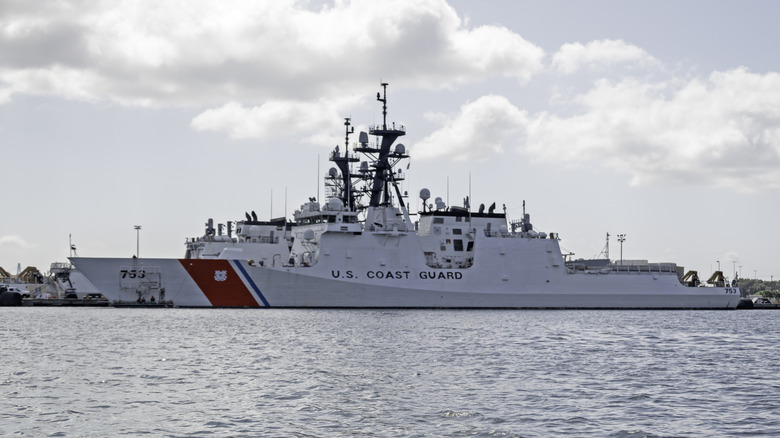Why Coast Guard Ships Are Painted White (But Navy Ships Are Gray)
When Congress first put the Coast Guard into service in 1790, it was also the fledgling nation's only "navy." In fact, the Navy wouldn't be established for another eight years. Still, someone had to stop smugglers and impose trade and tariff laws, thus making it one of the oldest organizations within the federal government itself and the country's oldest military branch. It still has one of the five oldest military ships in active service today.
The USCG is tasked with an array of responsibilities. During peacetime, it functions as part of the Department of Homeland Security to enforce maritime laws within the territorial jurisdiction of the United States. They also help save lives and protect the marine environment along the nation's 95,471 miles of coastline (including Hawaii and Alaska). When at war, it falls under the purview of the Navy Department. This makes them a unique military service, law enforcement organization, regulatory agency, first responder, and intelligence gatherer all rolled into one.
Coast Guard vessels are painted white, a benign color that simultaneously makes them appear less threatening and more visible to others while conducting search and rescue missions. This starkly contrasts with gray Naval warships, where the more aggressive color acts as camouflage, making ships blend into the landscape that better hides them from enemy forces. Interesting science fact: since white reflects all wavelengths of light in the visible spectrum, things painted with it stay cooler.
White, black and red hulls of the USCG
The first ten armed revenue cutters built for the United States Revenue Cutter Service (now the U.S. Coast Guard) in 1790 were stationed along the Eastern Seaboard (New Hampshire, Massachusetts, Long Island Sound, New York Harbor, Delaware Bay, North Carolina, South Carolina, Georgia, and the Chesapeake Bay). Although they weren't painted white, it didn't take long before the color was associated with them.
In 1799, Treasury Secretary Oliver Wolcott created the first flag made explicitly for a federal government agency. Along with a dark blue eagle in the upper left corner, it had sixteen alternating, perpendicular red and white stripes (unlike the horizontal stripes seen on today's modern U.S. flag) representing each of the states in the Union at that time. Congress ordered these flags to be flown from every revenue cutter to symbolize the government's authority.
According to the U.S. Naval Institute, the white color scheme straightforwardly represents the maritime rule of law and is "inherently nonthreatening." While most of the USCG's front-line cutters are used for national security, patrol operations, wartime efforts (some USCG cutters carried missiles during the Cold War), and search and rescue operations are white, not all are. Ships used as buoy tenders and various workboats operating in the open ocean typically have a black hull, while icebreakers in icy regions have red hulls.

